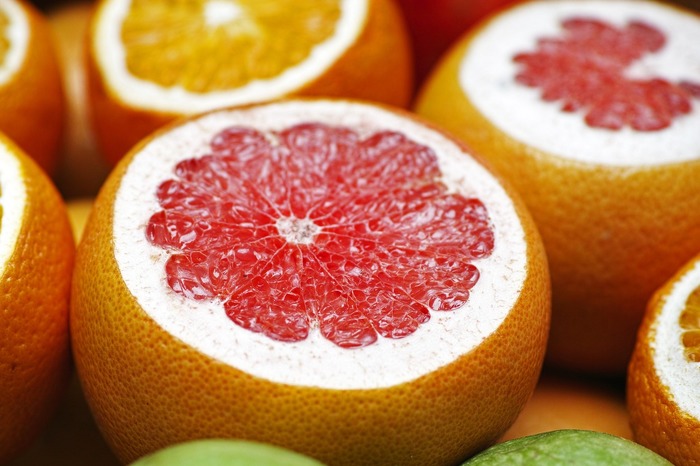Blood oranges
Red oranges, or blood oranges are a variety of orange (Citrus x sinensis) with a dark flesh colour, similar to that of raspberry fruits. It is a mutation of the normal sweet orange that is produced naturally when found in suitable conditions. Blood oranges are best from December to May. The degree of coloration depends mainly on the strong changes in temperature between day and night, together with the variety. It is believed that the colour is due to the temperature while the fruit is growing.
Its taste in considerably sourer than that of the regular orange. Depending on the variety, it can be a little smaller, while its skin is a little harder and more difficult to peel, but it is usually of the same texture and colour, even though sometimes it can be a little more straight, a little reddish and with very few seeds.
The distinctive dark flesh colour is due to the presence of anthocyanins, a family of antioxidant pigments common to many flowers and fruit, but uncommon in citrus fruits.
The blood orange is a natural mutation of the orange, which is itself a hybrid, probably between the pomelo and the tangerine. Within Europe, the Arancia Rossa di Sicilia (red orange of Sicily) has Protected Geographical Status.
-
Type of dish
- Beers
- Cocktails
- Breakfasts and brunch
- Burguers
- Juices, milkshakes and beverages
- Shellfish
- Bread and pastries
- Pizzas, patty
- Dessert
- Pasta
- Sándwich
- Pastries
- Finger foods
- Ice creams and sorbets
- Legumes
- Salads
- Eggs
- Patty
- liqueur
- Harvard plate
- Main course
- Meats
- Fish
- Birds
- Vegetables
- Soups and creams
- Rices
- Coffee, chocolate and infusion
- Cheeses
- Appetizers and canapes
- Temperature
- Cuisine type
- Additional culinary preparation
- Conservation technique
- Seasonal recipes
-
- Aromatic herbs
- Beverages
- Big game hunt
- Bread and pastries
- Canned goods and pickles
- Cereals
- Condiments, spices and additives
- Cooked, salted, preserved and cold meats
- Dried fruits and nuts
- Dry pulses
- Edible oils and vinegars
- Eggs and derivatives
- Feathered game hunt
- Fish cuts
- Fishes
- Insects
- Kitchen and bakery tecniques
- Kitchen and bakery utensils
- Meat cuts
- Meats
- Milk, cream and derivatives
- Mushrooms
- Offal
- Pasta, rice, flour and derivatives
- Poultry
- Seafood
- Service techniques
- Service utensils
- Vegetables cuts
- Vegetables, fruits, tubers and seaweed

